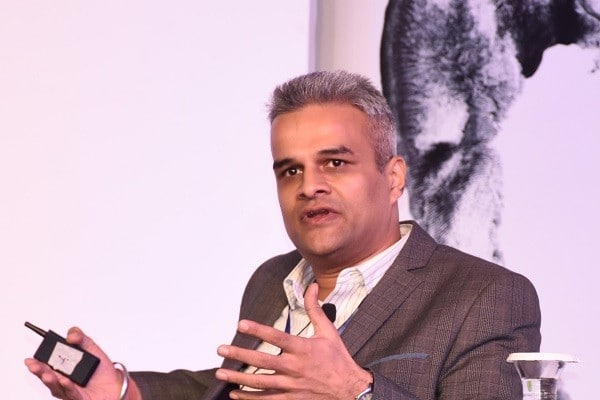A majority of the recent technology solutions make use of IoT that has gradually turned into bread and butter for most entrepreneurs and developers. For them, IoT connectivity solutions, whether cellular or LPWAN, are a necessity now. In order to make our developers aware of what Sigfox has in store for IoT, we are sharing a glimpse of an interaction that Sreemoyee Chatterjee from Electronics of Things had with Gaurav Sareen, country director for India and SAARC at Sigfox. Excerpts follow….
Q What is Sigfox’s connect with IoT?
Sigfox is one of the largest global IoT service providers in the world. We use RF technology that enables simple devices to communicate wirelessly to the cloud. These devices are autonomous and need not be plugged into power device. Sigfox’s technology provides wide area wireless connectivity for autonomous device communication. These devices are capable of sending data up to seven years without having to be charged or to replace battery. Our IoT connectivity is based on Low Power Wide Area Network (LPWAN) technology in which we use ultra narrowband (UNB) modulation. This enables long distance communication with low power which overcomes the limitation of wireless cellular connectivity that is more power hungry.
Q What are your offerings towards IoT at present?
Sigfox is not just limited to providing connectivity solution (both wireless cellular and LPWAN) towards IoT. We also offer end to end consultancy for IoT solutions to identify unmet needs, frame work, architecture and individual components required – both hardware and software. Bringing in system integrators and providing a rich IoT ecosystem including all the players to be able to deliver end to end IoT solutions are other areas that we cover under our consultancy.
Q How would you define your consultancy service? Which are the areas you generally cover under your consultancy service?
Apart from building an ecosystem of connectivity solutions for IoT, we also provide expert knowledge for IoT solutions and both our connectivity and consultancy services are purely based on B2B models. Utility space, agriculture space, clean tech space and asset tracking and monitoring space are few prominent areas of our focus where we offer our consultancy services.
This because, although these companies have an understanding of operational and information technology, they lack clarity in terms of communication (telecom part) in context of their own businesses. We build subject matter expertise specific to domains including both technology and the process that enables customization of their business model in alignment with IoT.
Q Tell us something about Sigfox’s experience with India. Who are your target audience in India?
In India, we currently have about 5 to 7 million connected devices and we anticipate 100% growth in the country. The IoT market is driven by two drivers. You can either save money or make money by using IoT applications. India mostly uses IoT applications to save money by improving efficiency and productivity.
Any industry or government body or enterprise in India can be our target audience that can use our IoT connectivity for digitizing an automatic manual process. This can enable better control and management, provide equipment (hardware), ensure people and asset monitoring and tracking including children and senior citizen trackers, monitoring of healthcare and natural resources in the form of tracking air, water quality and soil moisture.
Q Is there any unique offer that Sigfox has towards IoT?
Because we envisaged that there will be the need of a complimentary between cellular and non-cellular connectivity towards IoT, we, along with a leading chip designing company, have announced the availability of a SoC hybrid solution that offers both cellular (LTE-M) and LPWAN Sigfox connectivity enabling the enterprise customers enjoy the privileges of both cellular and low power wide area networks for IoT.
Q What are the challenges IoT is facing in India?
Well, challenges are many. India does not have a dedicated IoT communication policy and a regulatory body on the same. Effort to deploy infrastructure for wide area network is another challenge in the country. Also, IoT adoption is a function driven by already established references which, right now, are lacking in the country, IoT being the first of its kind in India. IoT solutions have back end loaded value that hinders entry to the market. Also, IoT solutions are heavily customized and not yet standardized across the value chain.
Q What are the opportunities in IoT, both global and in India?
We expect that the number of connected devices would grow in a volume exponentially in five years. Within 2022, there will be ten to fifteen billion connected devices across the world and India alone will have a couple of billions of them. It is expected that number of devices connected to low power wide area network in IoT ecosystem will exceed cellular subscriptions by three to five billion.
Areas like metering, energy, gas, agriculture, healthcare, retail, manufacturing, space and defense will make faster use of IoT. IoT in India will be used in all opportunities that have rooms to improve productivity and efficiency. Every area involving manual collection of data in large volumes, its retrieval and storage will be digitised by IoT.
Q What is Sigfox’s road map in India?
India is one of the biggest markets for Sigfox globally. We believe India will be one of our biggest markets in years to come. We are keen in building infrastructure and broadening Sigfox ecosystem partners in the country by investing in expansion of our partners that include chip companies, OEMs, application and analytics platform providers, system integrators and solution providers.










